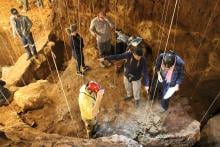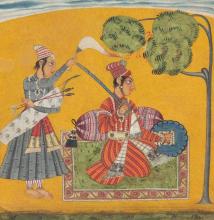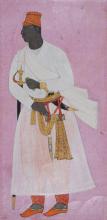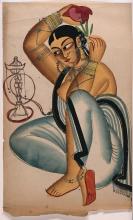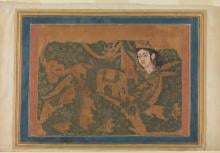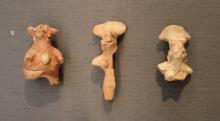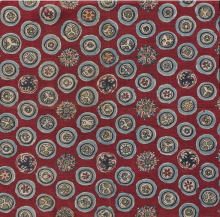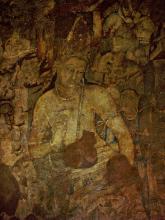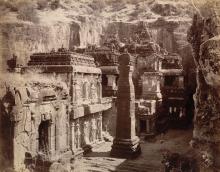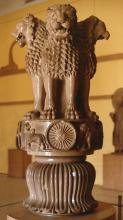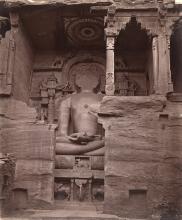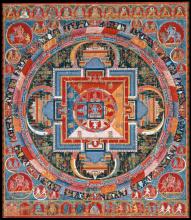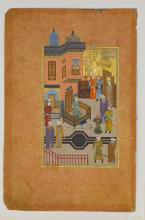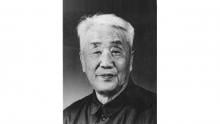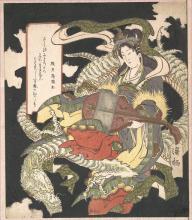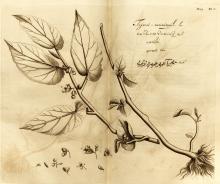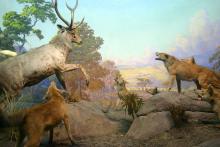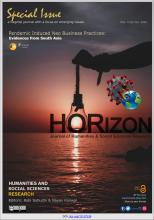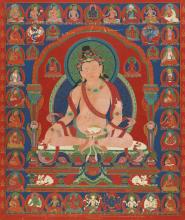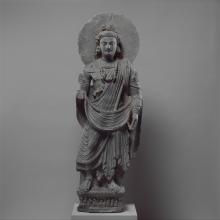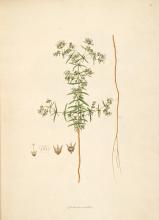History
News
19 Jun 2023
Elaborately carved with female figures and floral motifs, ringstones dating to the 3rd and 2nd centuries BC are amongst the most enigmatic artefacts of Mauryan and Shunga art. Scholars continue to speculate about their use, and believe that they may have been used as amulets and ritualistic objects or designators. Discover more about these ancient artefacts through this article.
04 Jun 2023
Beginning in the fifteenth century, until the nineteenth century, artists turned to classical music for inspiration, combining painting, allegory and music to create a genre known as Ragamala painting. Ragas — melodic frameworks central to Indian classical music — date back to nearly the fifth century, and each major raga is meant to evoke a particular mood or atmosphere, a season and a time of day. Ragamala paintings are distinctive for their nuanced depiction of emotions through environmental metaphors and imagery that often includes a hero or a heroine or both.
22 May 2023
From its origins as a wide sash worn as a part of ceremonial, military and everyday dress in the Indian subcontinent, to becoming a part of British military clothing that was thought to guard against cholera, the cummerbund has had a storied legacy. Read about how this humble accessory evolved over the years.
12 May 2023
Understanding how catalytic organic polymers emerged on prebiotic Earth is vital to understanding the origin of life. Now, a team of scientists at Tohoku University have recently found a potential environment for the reaction that produced catalytic organic polymers.
08 May 2023
In operation from 1863 to 2016, Bourne and Shepherd was one of the first commercial photography studios in India, known for architectural, landscape and topographical photographs, as well as portraits of Indian nobility, British officials and European travellers. While these images found traction as souvenirs, the studio’s photographs were also widely utilised in the scientific community for the topographical and sociological study of the Indian subcontinent.
23 Apr 2023
Born out of the changing society of nineteenth-century Calcutta, Kalighat painting was a popular medium among the patuas (painters) who worked in the vicinity of the Kalighat temple. Though these paintings were originally intended to be souvenirs for devotees visiting the temple and featured primarily Hindu imagery, they expanded over time to include other religious traditions as well as socio-political commentary.
09 Apr 2023
Often regarded as Prophet Muhammad's vehicle in Islamic mythology, the Buraq is a winged creature often depicted with a human head and the body of a horse. It has been depicted in visual art across the Islamic world and continues to be a motif used by artists in the region.
26 Mar 2023
These figurines from more than 4000 years ago, provide insights into the material culture of one of the oldest Bronze Age Civilizations, the Indus Valley Civilization.
12 Mar 2023
Derived from the Gujarati word saras, meaning "beautiful", Sarasa cloth is believed to have been introduced to Japan as a trade textile by the Dutch during the Muromachi period (1336–1573).
03 Mar 2023
Asia Research News monitors the latest research news in Asia. Some highlights that caught our attention this week are that COVID is transmissible between dogs, a new material created to replace extracted teeth, and a fungi-eating plant that was thought to be extinct.
26 Feb 2023
Ajanta Murals represent some of India's earliest and most significant examples of cave painting. Spanning from the second and first centuries BCE to the late fifth CE, they narrate stories of the Buddha through his life as various bodhisattvas. Read on to discover the iconography, style and history of Ajanta Murals.
29 Jan 2023
The Kailasanatha Temple at Ellora is the largest monolithic rock-cut monument in the world. Considered to represent the victory of its patrons, the Rashtrakuta Dynasty, over the Chalukyas, the temple is widely considered remarkable for its size, standing at 32 metres high and 78 metres long.
15 Jan 2023
Believed to have been built in 250 BCE to commemorate the occasion of the Buddha's first sermon in Sarnath, the lion capital is the most elaborately carved surviving capital made under the patronage of the Mauryan king Ashoka.
01 Jan 2023
Rock-cut sculpture has independently arisen in various parts of the world, from subterranean structures in Malta in the Neolithic Period to tombs in ancient Egypt and the Phrygian kingdom in present-day Turkey. Read on to learn about India's earliest surviving examples of rock-cut sculpture.
19 Dec 2022
Often used by devotees as a meditation tool, Mandalas are symmetrical circular forms that typically comprise a central deity surrounded by motifs and symbols.
09 Dec 2022
Asia Research News monitors the latest research news in Asia. Some highlights that caught our attention this week are a coat that can make you invisible to AI cameras, a fossilized whale skeleton found in a river valley, and hope for humans after our Y chromosome disappears.
04 Dec 2022
Collecting Chinese porcelain as emblems of wealth and taste has a long and rich history. From the Balkans to Iraq and Iran through South Asia and East Africa, nobles and emperors of the 16 century collected Chinese ceramics to showcase them.
01 Dec 2022
Giants in History: Chinese palaeontologist, archaeologist and anthropologist Pei Wenzhong (January 19, 1904 – September 18, 1982) is regarded as a founder of Chinese anthropology.
23 Nov 2022
Giants in History: Through her iconic stories featuring fictional scenes from the history of the Philippines, language teacher and academic Genoveva Matute (3 January 1915 – 21 March 2009) helped strengthen the Filipino identity.
06 Nov 2022
Indian deities such as the goddess Saraswati were refashioned into syncretic, cross-cultural kami (deities), when Buddhist texts, teachings and philosophies were transmitted to Japan and took on local forms.
23 Oct 2022
Published in 1693, Hortus Indicus Malabaricus offers a glimpse into the history of medical and natural sciences of South Asia.
25 Sep 2022
Taxidermy is the art of creating lifelike representations of animals by using their skin, feathers, scales or fur. It draws on the skills of painting, sculpture, model-making and deep knowledge of animal anatomy. Used for creating trophies of hunted animals as symbols of heroism, the practice was also utilised for pedagogical purposes in institutions like museums.
23 Sep 2022
A special issue of Horizon Journal of Humanities & Social Sciences Research (JHSSR Vol.4 (S) Oct. 20212) is now published. This issue includes papers on the Covid-19 pandemic, developments in business and digital practices, changes in social media behavior in South Asia.
08 Sep 2022
Thangka is a devotional scroll-painting tradition, emerging from seventh-century Nepal, in which images of Buddhist deities are painted on scrolls to gain divine merit and to serve as visual aids for teaching and meditating.
28 Aug 2022
Commissioned between 1815-1820, the Fraser Album is considered a defining work of the Company School of painting depicting the people of India.
26 Aug 2022
Asia Research News monitors the latest research news in Asia. Some highlights that caught our attention this week are dogs crying happy tears when their owner comes home, a new early warning system for solar flares, and burial practices that can tell us about ancient migration patterns.
14 Aug 2022
A genre of sculpture developed in the northwest region of the ancient Indian subcontinent in the form of reliefs and freestanding work as expressions of the Buddhist faith.
12 Aug 2022
Asia Research News monitors the latest research news in Asia. Some highlights that caught our attention this week are the potential use of fish ear bones to tell us about the seawater temperature millions of years ago, how hotter nights can lead to an increase in global mortality, and how Japanese children’s walking development differs to other countries.
31 Jul 2022
The history of extracting chay root dye — a natural red colourant — from the chay plant (Oldenlandia umbellata) dates back to at least the seventeenth century. Read on to know more about the relevance of the dye in the textile dyeing practices of southern India.
Events
Sorry, no events coming up for this topic.
Researchers
Sorry, no researchers coming up for this topic.
Giants in history
Through her iconic stories featuring fictional scenes from the history of the Philippines, language teacher and academic Genoveva Matute (3 January 1915 – 21 March 2009) helped strengthen the Filipino identity.
Hwang Hye-seong (5 July 1920 – 14 December 2006) was an expert on Korean royal court cuisine, the knowledge of which she dedicated her career to keeping alive. Formerly an assistant professor of nutritional science, Hwang met the last kitchen court lady in the Joseon Dynasty Han Hui-sun and, from her, learned about the culinary traditions of the royal court.


